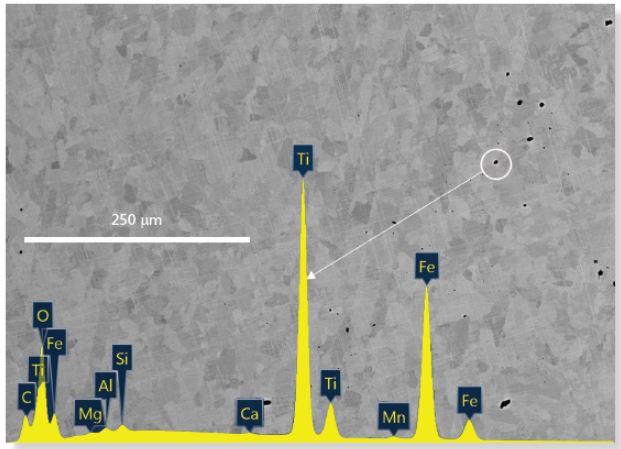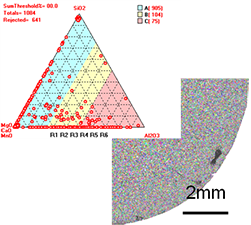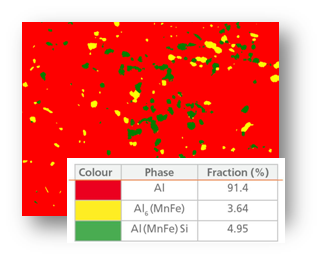関連: 金属・合金・複合材料・セラミック
大量生産に向けた材料一貫性と品質確保

When producing metals it is crucial to understand the quality and cleanliness of the material, this covers such things as the internal grain structure of the material or the number of non-metallic inclusions. Both of these can have huge consequences for the properties of the metal. Depending on their nature and size, non-metallic inclusions can be detrimental to the performance of steel products. We offer solutions based on energy dispersive X-ray spectrometry (EDS) in the scanning electron microscope (SEM) that allow the automated detection and classification of inclusions and provide a quality rating according to a range of national and international standards.

The strength of finished steel products is often influenced by their grain structure. Steel rods and wires designed for use in construction projects need high strength, plasticity, toughness & torsion. Failure under torsion can be particularly difficult to relate to the microstructure and needs mapping of the grain structure of the complete cross-section of the steel wire. AZtecHKL together with the high-speed Symmetry electron backscattered diffraction (EBSD) detector is ideally suited to automating sample analysis over large sample areas.
Steels are not the only metals where these material properties from production variation need to be classified. Aluminium production for applications such as drink cans generally involves producing high volume at low cost. The distribution and composition of impurities and precipitates can be crucial to the properties of the aluminium metal. Using electron microscopy-based methods such as EDS and EBSD, precipitates can be identified and their impact on the structural properties can be explained.

Two types of precipitates identified using EBSD and EDS